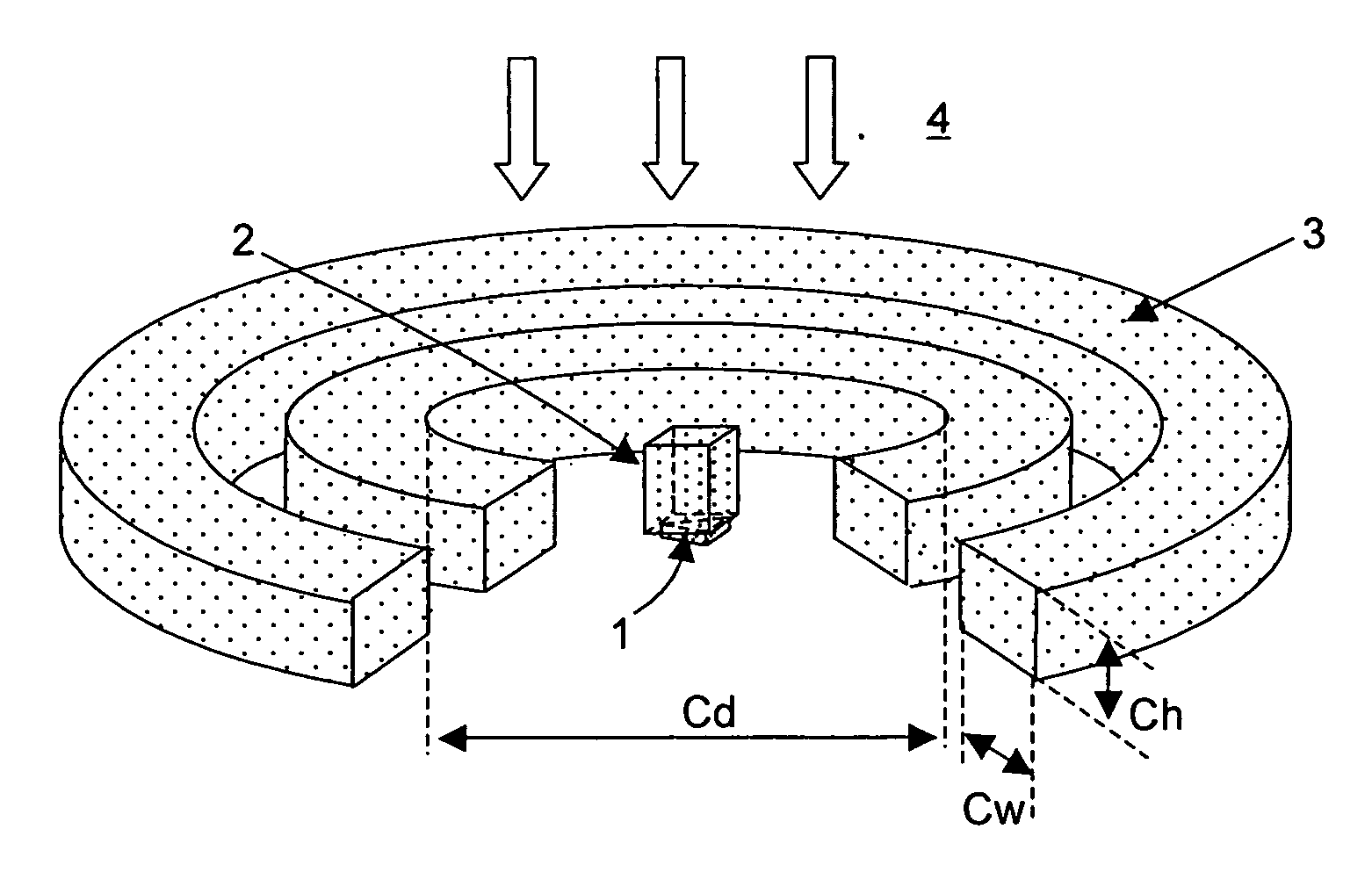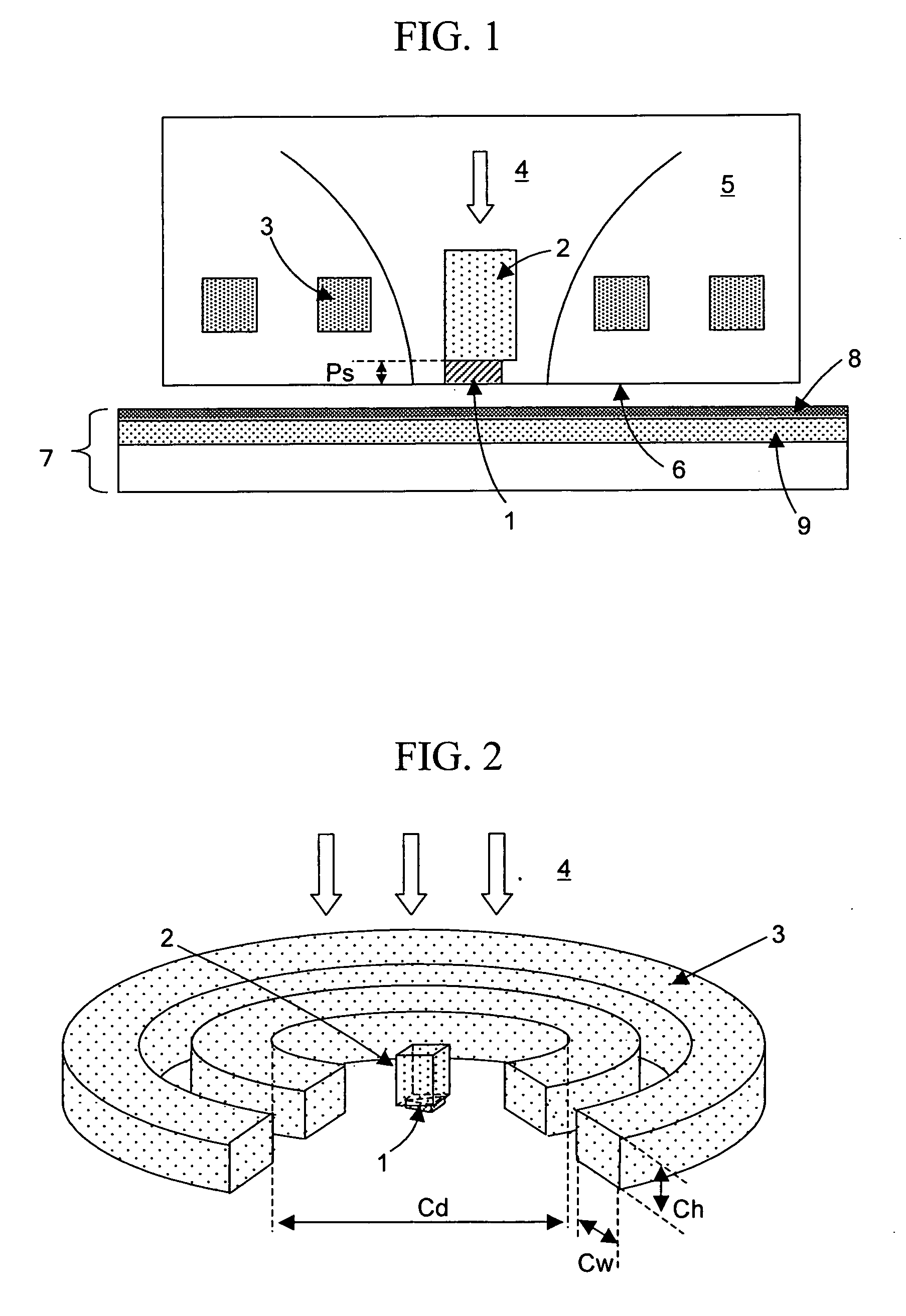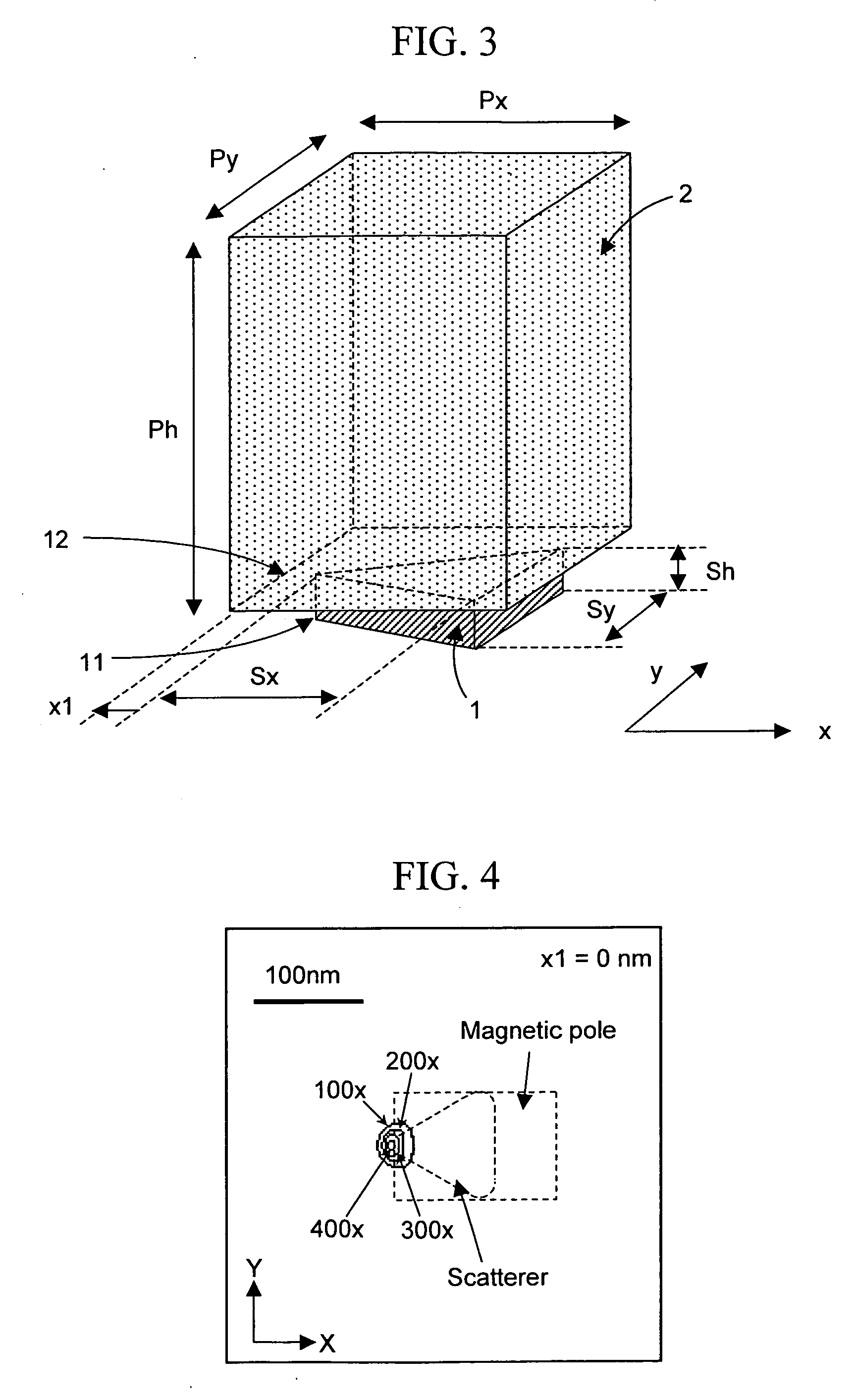Head for thermal assisted magnetic recording device, and thermal assisted magnetic recording device
a recording device and magnetic recording technology, applied in special recording techniques, recording information storage, instruments, etc., can solve the problems of recording information loss due to thermal fluctuations, recording bits cannot be formed in the medium, etc., and achieve the effect of reducing background ligh
- Summary
- Abstract
- Description
- Claims
- Application Information
AI Technical Summary
Benefits of technology
Problems solved by technology
Method used
Image
Examples
example 1
[0050] In a head for a thermal assisted magnetic recording device of the present invention, as shown in FIGS. 1 and 2, a conductive scatterer 1 for generating an optical near-field was placed in a bottom portion of a slider 5 to serve as a base of the head, and coils 3 for generating a magnetic field were placed above the scatterer 1 (on the opposite side thereof from a medium 7). Furthermore, in order to increase the intensity of the magnetic field at a position where the optical near-field is generated, a magnetic pole 2 was placed over the scatterer. Here, “being placed over the scatterer” means that the midpoint of the line connecting a point on the scatterer at which the optical near-field is generated and an end portion opposite thereto is arranged to be positioned under the magnetic pole.
[0051] The direction in which light enters the scatterer is arbitrary, and it may come from above or below the scatterer 1 or in a lateral or an oblique direction relative to the scatterer 1...
example 2
[0066] Next, examples will be described for the case where the shape of the scatterer is changed.
[0067] The shape of the scatterer may be a trapezoid, a rectangle, an ellipse, a sphere, or the like instead of a triangle. FIG. 14A shows an example of a case where the shape of the scatterer is a trapezoid. The material of the scatterer 1 was gold. The length Sx thereof was set at 100 nm, the upper base length S2 thereof was set at 40 nm, the lower base length S1 thereof was set at 100 nm, and the thickness Sh thereof was set at 30 nm. The shape of the magnetic pole 2 was also a trapezoid, and x- and y-direction dimensions thereof were the same as those of the scatterer 1. The scatterer 1 and the magnetic pole 2 were placed one on top of the other. The thickness Ph of the magnetic pole 2 was set at 500 nm. The material of the magnetic pole 2 was FeCo alloy. Light which was polarized in the x direction and had a wavelength of 780 nm was made incident from above, thus generating an opti...
example 3
[0069] Next, examples will be described for cases where the scatterer is of a soft magnetic material. The material of the scatterer may be changed to a soft magnetic material. FIGS. 16A and 16B show an example of a case where the material of the scatterer is FeCo alloy and where the scatterer also serves as a magnetic pole. Since FeCo alloy has conductivity, an optical near-field can be generated at the vertex 11 as in the case where metal such as gold is used. This can reduce the distance between the magnetic pole (scatterer) and the medium, and can therefore increase the intensity of the magnetic field applied to the medium.
[0070] In this example, the shape of a scatterer 17 made of a soft magnetic material was a triangle. Adjusting the length Sx of the scatterer 17 so that plasmon resonance occurs can increase the intensity of the optical near-field generated at the vertex 11. In this example, Sx was set at 140 nm. The thickness Sh of the scatterer was set at 500 nm, and the ang...
PUM
 Login to View More
Login to View More Abstract
Description
Claims
Application Information
 Login to View More
Login to View More - R&D
- Intellectual Property
- Life Sciences
- Materials
- Tech Scout
- Unparalleled Data Quality
- Higher Quality Content
- 60% Fewer Hallucinations
Browse by: Latest US Patents, China's latest patents, Technical Efficacy Thesaurus, Application Domain, Technology Topic, Popular Technical Reports.
© 2025 PatSnap. All rights reserved.Legal|Privacy policy|Modern Slavery Act Transparency Statement|Sitemap|About US| Contact US: help@patsnap.com



